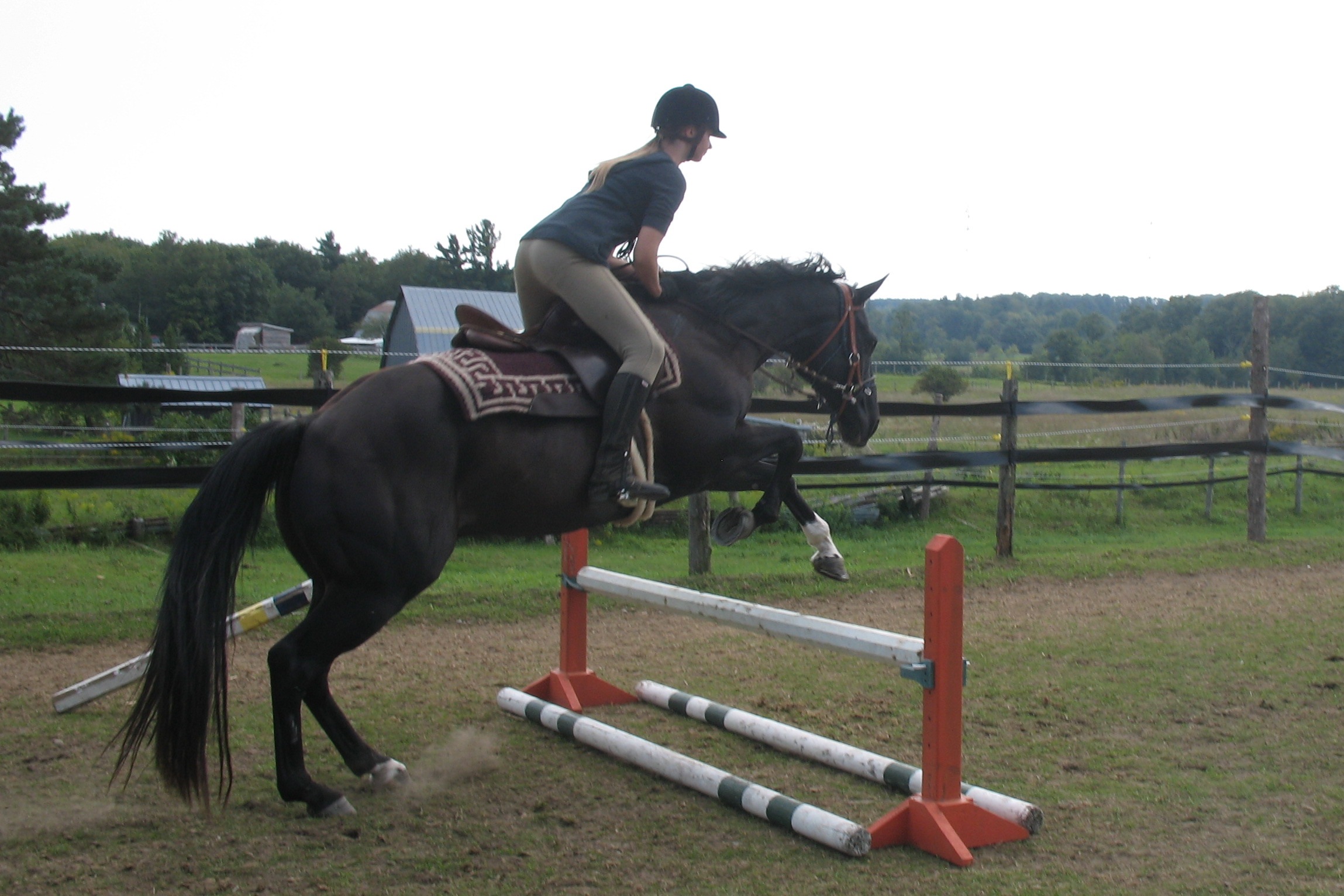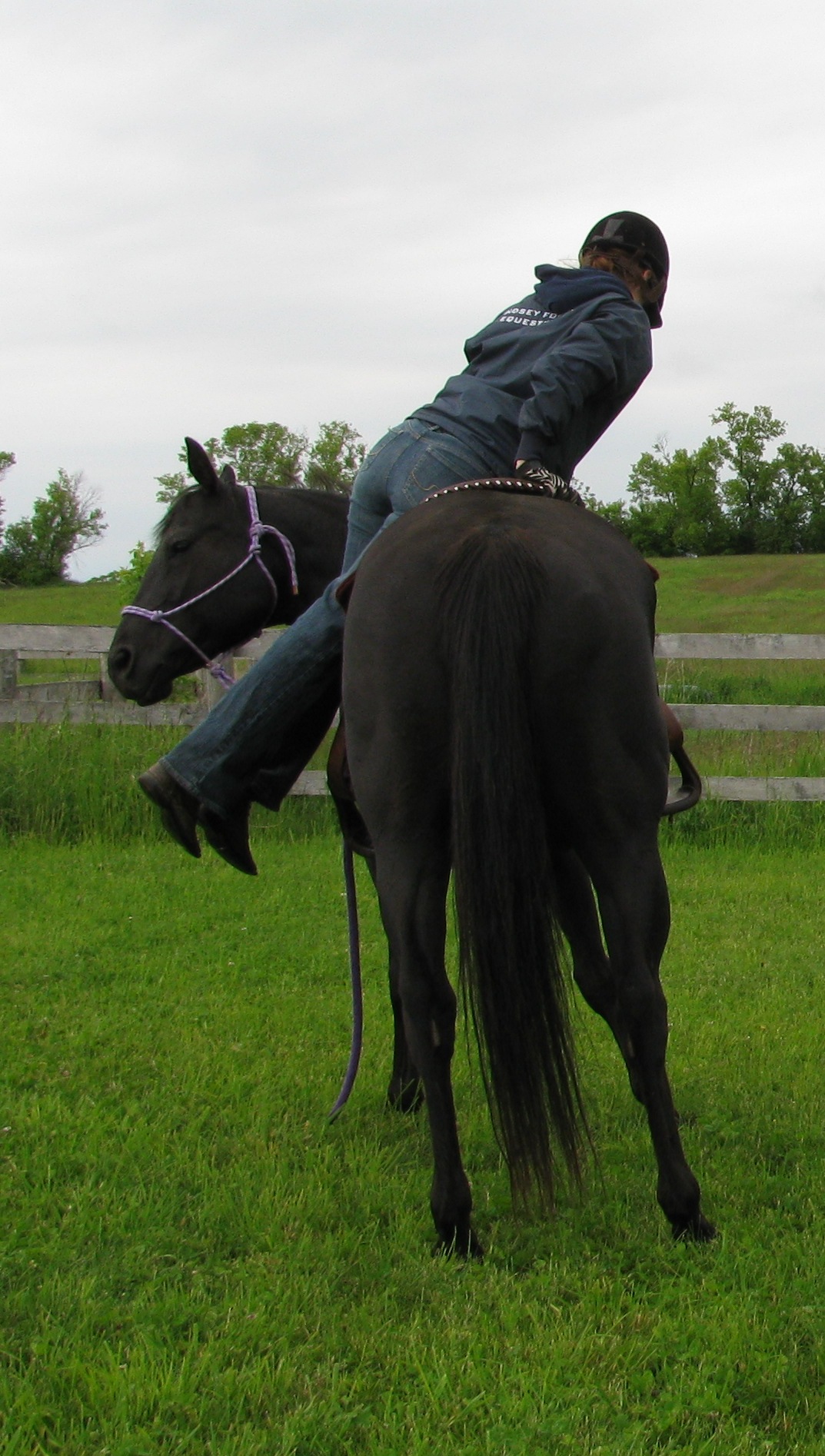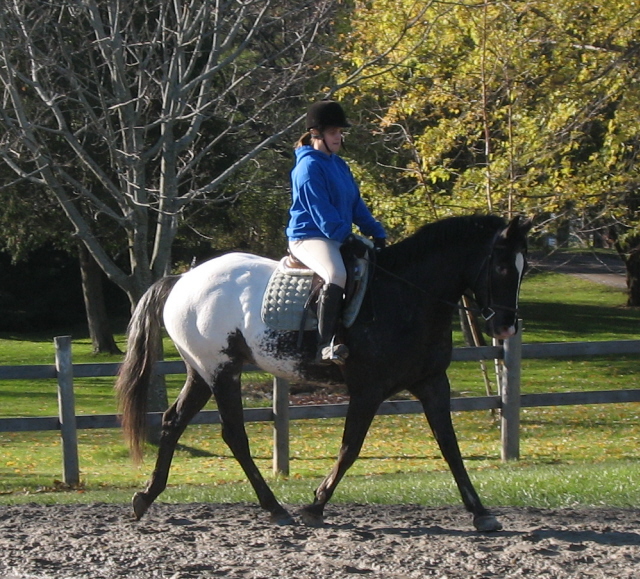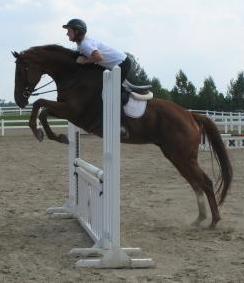
By Lindsey Partridge (formerly Forkun)
There are many reasons why horses might be rushing or refusing fences - to learn about why horses refuse and rush fences and how to fix those problems click here.
 Teaching horses to jump is something that takes practice and ability. Having an experienced person or coach to help you is definitely beneficial. You should always consult a coach to check your position and tack as these can be common causes for your horse acting quick or unruly.
Teaching horses to jump is something that takes practice and ability. Having an experienced person or coach to help you is definitely beneficial. You should always consult a coach to check your position and tack as these can be common causes for your horse acting quick or unruly.
These 5 exercises can help to make your horse a calm and confident horse over fences - provided that your position is good, your tack fits, and your horse isn't physically suffering from anything:
1. A Good Mount - the first exercise to make your horse calm and confident actually doesn't involve jumping at all. Before you even get near any fences, you need to assess your mount. Does your horse stand perfectly still for you while you get on? or does your horse walk off before you give any cue?
 Right from the start your horse could be showing signs of anxiety if they dance around while you get on (even if it is just a little dancing around, it is a sign of anxiety). For some horses, they may not be anxious, but instead they have learnt it is okay to speed up into a walk even without your permission. This is not good.
Right from the start your horse could be showing signs of anxiety if they dance around while you get on (even if it is just a little dancing around, it is a sign of anxiety). For some horses, they may not be anxious, but instead they have learnt it is okay to speed up into a walk even without your permission. This is not good.
You need to establish from the beginning that the horse should wait for your cue before picking up speed. That way when you start jumping your horse understands that it isn't okay to switch from canter to gallop... because from the beginning you tell your horse it isn't okay to go from halt to walk without your permission.
This will also show the horse that you pay attention and you have good leadership. This means your horse will have more confidence in you as a leader and this will build trust. To learn more about a good mount click here.
 2. Go Slow Go Fast - the second exercise also has nothing to do with jumps at all. If you want your horse to understand that your half halt means to slow down, then you need to practice slowing down when there isn't the distraction of the jump.
2. Go Slow Go Fast - the second exercise also has nothing to do with jumps at all. If you want your horse to understand that your half halt means to slow down, then you need to practice slowing down when there isn't the distraction of the jump.
Being able to slow down and speed up within a gait is a powerful communication tool that will give more understanding to your horse. You should be able to do a slow (collected), medium (working), and fast (extended) pace within every gait. That means you should be able to do a slow walk, slow trot, slow canter, medium walk, medium trot, medium canter, extended walk, extended trot, and extended canter. In more advanced levels you should also be able to do a slow back up, medium back up, and extended back up.
Practice going slow and then going fast within each gait. Start with the walk and then practice the trot, and eventually the canter speeds once you have good control at the walk and trot.
When you want to change speeds, start with your body. In the trot you can slow your post to encourage a slow trot, or you can do big posts to encourage a big/fast trot. Use your legs and reins to help you get control of going slow and then going fast.
Remember to reward your horse with a walk break on a loose rein or a friendly rub to tell them that they got it right!
 3. Just Let Your Horse Do It - sometimes the horse rushes fences because they worry about the rider interfering with their balance. Sometimes the rider can make a position error like getting left behind and yanking on the horse's mouth which can cause the horse to loose confidence. Sometimes the horse can be skittish and refuse or rush so many jumps that the confidence in the rider can get ruined.
3. Just Let Your Horse Do It - sometimes the horse rushes fences because they worry about the rider interfering with their balance. Sometimes the rider can make a position error like getting left behind and yanking on the horse's mouth which can cause the horse to loose confidence. Sometimes the horse can be skittish and refuse or rush so many jumps that the confidence in the rider can get ruined.
Letting your horse jump on its own will help your horse figure out what to do with his feet, and let you keep your confidence because you stay on the ground. You can lunge your horse over a few little jumps everytime you play, or once in a while set up a free jumping chute and challenge your horse through a new grid or combination.
Remember the reward is in the release. After every successful jump, make sure you disengage (stop) your horse and let them have a short break (could be 10 seconds or 5 minutes - depends on how much reward your horse needs).
Getting your horse to stop after each successful jump (and turn and look at you) will help tell your horse what you want because you reward your horse, but also it will reinforce in the horse that after each obstacle they are to look to you and wait for the next direction or task - not keep running. Learn more about free jumping click here.
4. Poles with Variety- what is the hurry to get to the jumps? Ground poles and raised poles (poles that are raised barely off the ground about 4-8 inches) are so valuable when teaching horses to jump. Poles can be placed around the ring in a couple exercises.
You can set single poles around the ring and work them into your flat work. As you do your warm up you can go over the single poles. This can teach your horse that going over something does not have to be a big deal - just easy and simple. Mix up some pole work with non pole work to keep your horse guessing when you will be going over poles.
Raised poles will help to teach your horse to pick up their feet and provide a small challenge without creating a big task. Pretend like the poles aren't even there, continue posting in trot, or half seat in canter - you don't want to make a big deal out of the poles - just simple, easy, and fun.
So many times we develop a routine of: we get on, walk, then trot both ways with some circles, then we canter both ways, then we jump, then we walk and cool out. This is so boring and creates a routine that your horse can anticipate. You need to stay in a conversation and out of a routine so change things up - poles make this easier because you can walk, trot, and canter poles so you can make different courses or patterns with the poles part of your warm up.
Walk over some poles, canter a couple strides, then do trot work with some poles, some more canter, then some jumping, return to some trot and canter pole exercises, walk some poles, etc to keep your exercise session different. Keep your riding sessions different and always dismount in a different area in the arena (and get on in a different area too if you can) - keep your horse listening to you by doing different things.
If your horse gets stuck in a routine, then it can make them nervous when the routine is changed - for example if you decide to go to a show, clinic, or if someone new is riding with you can make a horse get really upset if they aren't used to change.
 5. Walk Some Jumps - Your horse should be able to walk a variety of little jumps. Walking jumps takes the speed away from the horse and leaves your horse only with their technique to focus on. Your horse should be able to walk up to a fence and jump it with regular form.
5. Walk Some Jumps - Your horse should be able to walk a variety of little jumps. Walking jumps takes the speed away from the horse and leaves your horse only with their technique to focus on. Your horse should be able to walk up to a fence and jump it with regular form.
Your horse may end up taking a couple steps of slow trot, but remember that you have to establish the pace and your horse should never think it is okay to just decide to go faster without your permission. Set the pace at a forward walk and insist to stay at a walk.
Start with really small jumps of 6 inches and advance to cross rails and jumps up to 2ft. Every horse is different and you will have to suit the jumps to meet the capabilities of your horse - generally the average horse should be able to walk and jump over a 2ft fence.
The idea is that if you can teach your horse proper technique by taking away his speed, then you shoud develop a horse that is more confident about jumping. At the same time this will slow down the jump and give you an opportunity to really get good at your jumping position and timing.
Then you can advance to trotting larger fences and insist on the horse maintaining the trot pace while jumping fences 2ft - 3ft. Then when you advance to cantering fences your horse will have good technique, confidence, and an understanding that they should maintain pace - which is no longer scary because the horse knows he can jump from the walk or trot, so he doesn't need to go fast.







